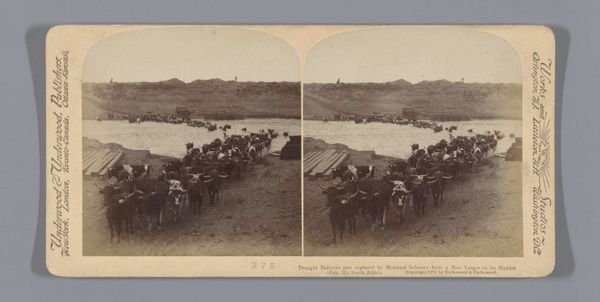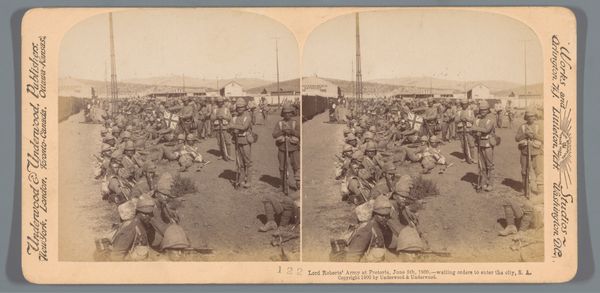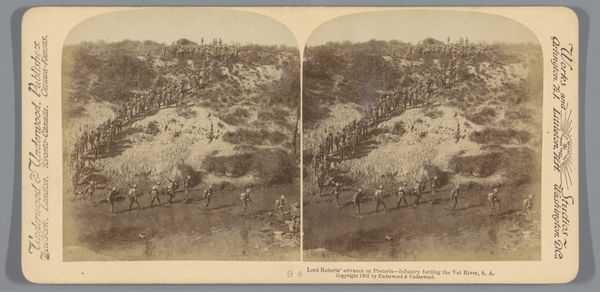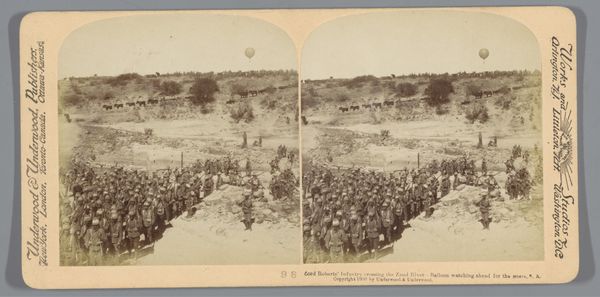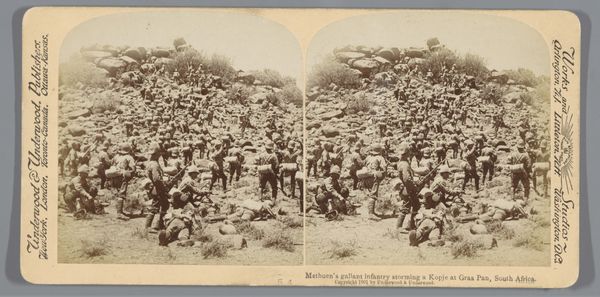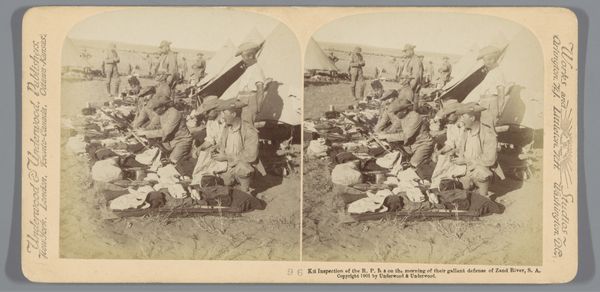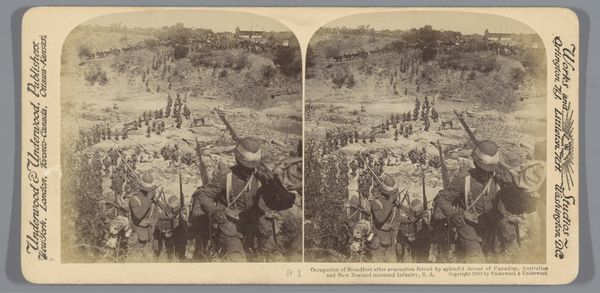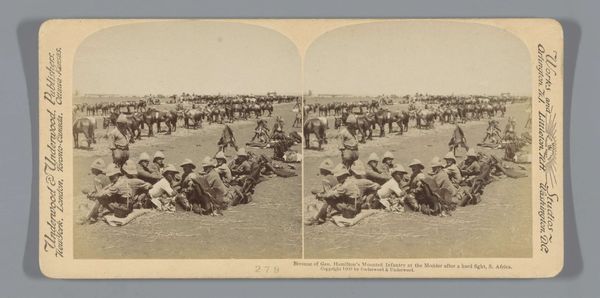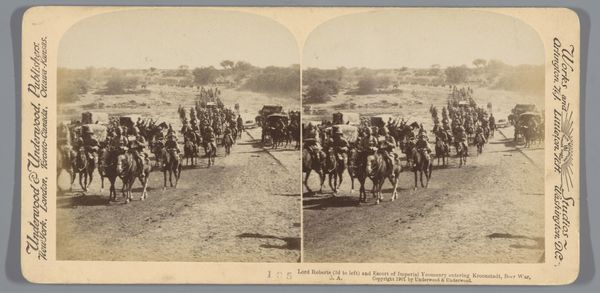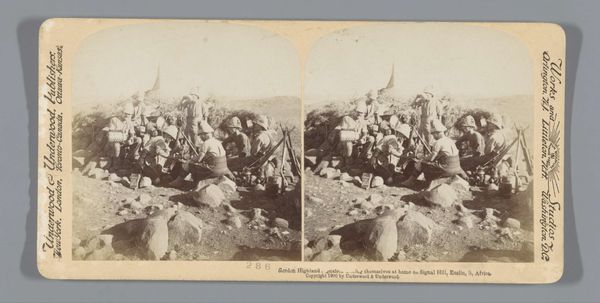
Geënsceneerde voorstelling van Britse soldaten die de Vetrivier in Zuid-Afrika oversteken met kanonnen 1901
0:00
0:00
print, photography, albumen-print
# print
#
landscape
#
photography
#
orientalism
#
history-painting
#
albumen-print
#
realism
Dimensions: height 88 mm, width 178 mm
Copyright: Rijks Museum: Open Domain
Historian: This albumen print, created in 1901 by Underwood & Underwood, captures a "staged presentation of British soldiers crossing the Vet River in South Africa with cannons". What jumps out at you? Artist: It's a scene brimming with a quiet kind of stoicism, isn’t it? The monochrome tones lend a certain gravitas, even with the slightly rough quality of the albumen print. It's oddly dreamlike. Historian: Indeed, the photojournalistic approach aimed to capture an authentic realism but note, this is "staged”. Stereoscopic images like this were hugely popular, designed to bring exotic locales and current events right into people’s homes. There's a political dimension: to project power, heroism… Artist: Oh, absolutely. It's that almost cinematic construction that grabs me. See how they've posed some of the soldiers, those straining figures closest to us...They are heroic laborers, really, titans pulling the war machine forward. And yet, there’s also something so inherently unnatural about such carefully curated “realism”. Historian: Precisely! It fits perfectly into a broader visual culture designed to reinforce imperial ambitions. The British public, far removed from the realities of the conflict in South Africa, would consume images like these as evidence of their nation’s dominance and technological prowess. Artist: And the landscape itself! It is almost as if the environment is another character. It is not overly dramatic but more neutral, passively witnessing these events, making the river crossing all the more profound. Historian: Exactly! The backdrop adds an element of authenticity to what is essentially propaganda. A landscape touched by war is transformed from simple location to strategic setting, full of meaning within that historical context. Artist: Looking at it now, I keep imagining the sounds. The creaking wood, the splash of water, and muted commands lost to the wind... it feels almost like an echo in sepia tones. Historian: It serves as a potent reminder, I think, of the relationship between photography and power. Even what appear as impartial records can be carefully orchestrated to sway public sentiment and normalize certain historical narratives. Artist: Well said! The past is never simply found but always actively framed. Historian: And seeing that frame helps us understand not just the photograph but the era in which it was produced and consumed.
Comments
No comments
Be the first to comment and join the conversation on the ultimate creative platform.
